
X射线天文观测 王俊贤 中国科技大学天体物理中心 6/4/2022
X射线天文观测 王俊贤 中国科技大学天体物理中心 6/4/2022
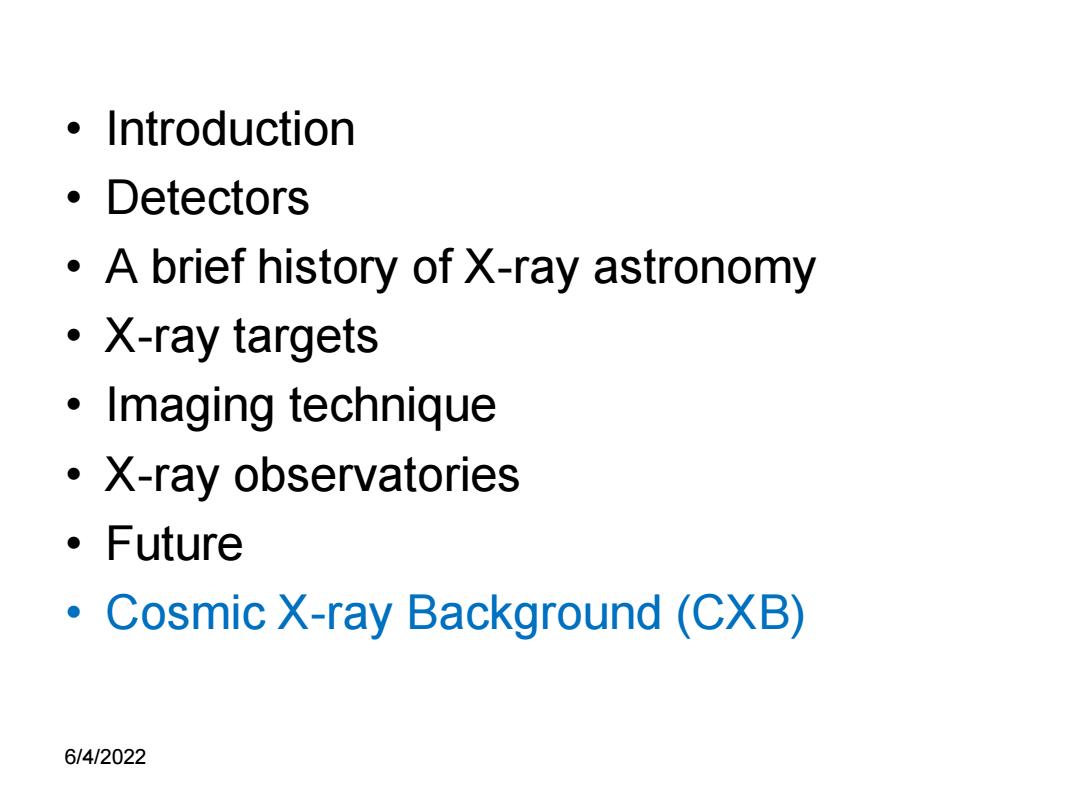
·Introduction ·Detectors A brief history of X-ray astronomy ·X-ray targets ·Imaging technique ·X-ray observatories ·Future Cosmic X-ray Background(CXB) 6/4/2022
• Introduction • Detectors • A brief history of X-ray astronomy • X-ray targets • Imaging technique • X-ray observatories • Future • Cosmic X-ray Background (CXB) 6/4/2022
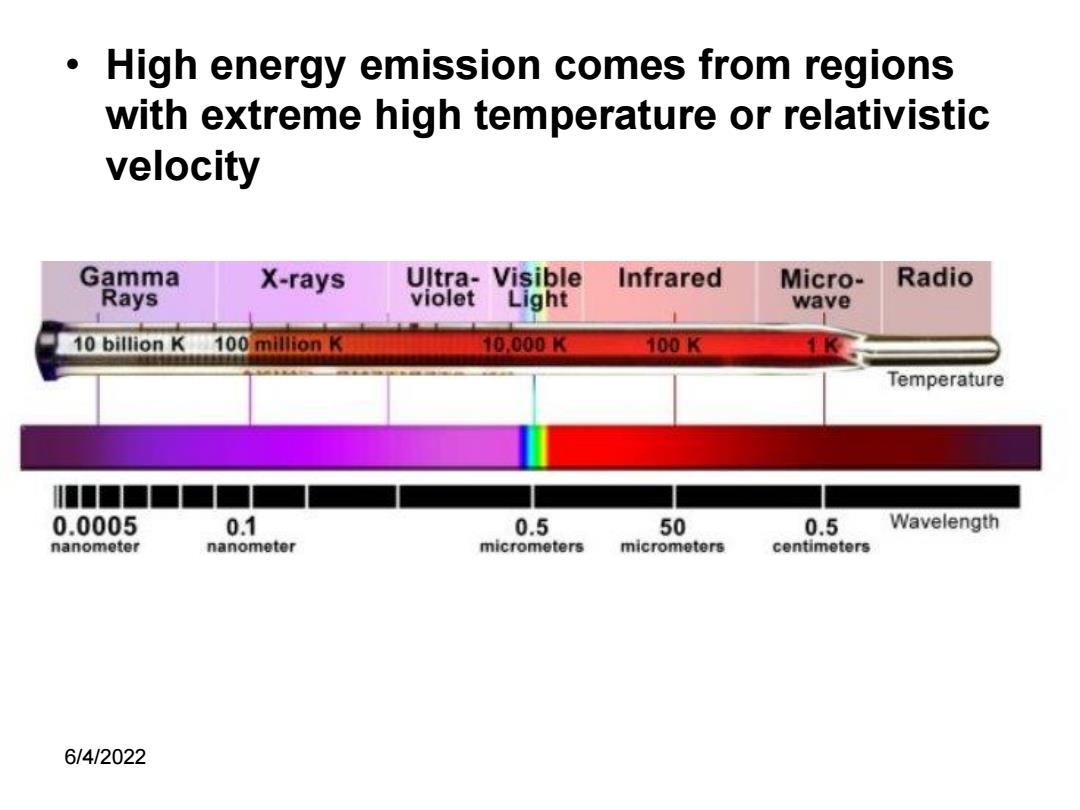
High energy emission comes from regions with extreme high temperature or relativistic velocity Gamma X-rays Ultra-Visible Infrared Micro- Radio Rays violet Light wave 10 billion K 100 million K 10.000K 100K Temperature 0.0005 0.1 0.5 50 0.5 Wavelength nanometer nanometer micrometers micrometers centimeters 6/4/2022
• High energy emission comes from regions with extreme high temperature or relativistic velocity 6/4/2022

0.1 keV 1.0 keV 10.0 keV 100 keV 1 MeV "Soft" "Hard" Soft gamma-rays Photon energy unit kev Convert photon energy to wavelength 1keV=1.6x109erg=hclλ,λ=12.4A the ionization potential of hydrogen:13.6 ev or 912A ·Temperature 1 keV~1.16 x 107K (hv =kT) Doppler shift a UV photon at 1240A to 1keV require a speed of 0.9998c 6/4/2022
• Photon energy unit – keV • Convert photon energy to wavelength 1 keV = 1.6 x 10-9 erg = hc/λ, λ=12.4Å the ionization potential of hydrogen: 13.6 eV or 912Å • Temperature 1 keV ~ 1.16 x 107K (hν = kT) • Doppler shift a UV photon at 1240Å to 1keV require a speed of 0.9998c 6/4/2022
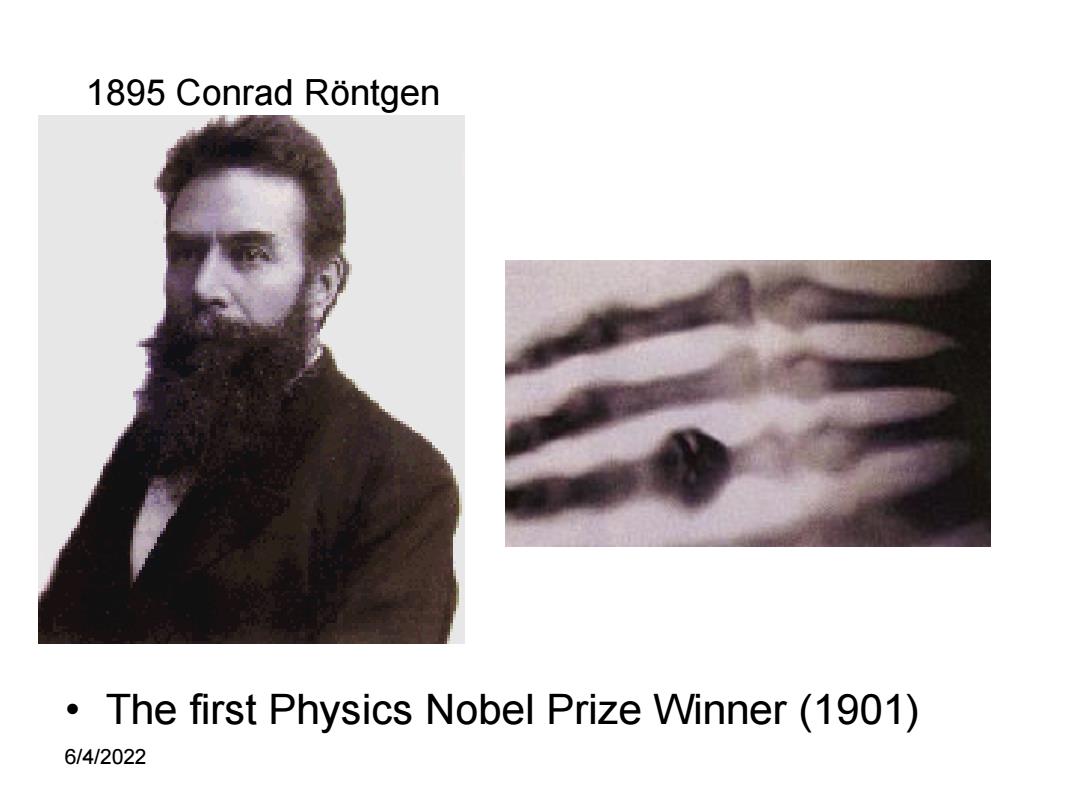
1895 Conrad Rontgen The first Physics Nobel Prize Winner(1901) 6/4/2022
1895 Conrad Röntgen • The first Physics Nobel Prize Winner (1901) 6/4/2022

Rapid growth of X-ray astronomy Simple detectors on rocket flight in 1962,equivalent to a naked eye in visible astronomy Copyright Christoph Westhaus Solar Array 2l Sunshade Door Spacecraft Module ·A billion times more Aspect Camera sensitive today,comparable Stray Light Shad to 10 meter optical High Resolution Camera (HRC] telescopes High Resolution Instrument Mirror Assembly Module Thrusters(4) (HRMAJ Gratings 105bs Low Gain 6/4/2022 Antenna (2 1AC15
Rapid growth of X-ray astronomy • Simple detectors on rocket flight in 1962, equivalent to a naked eye in visible astronomy • A billion times more sensitive today, comparable to 10 meter optical telescopes 6/4/2022
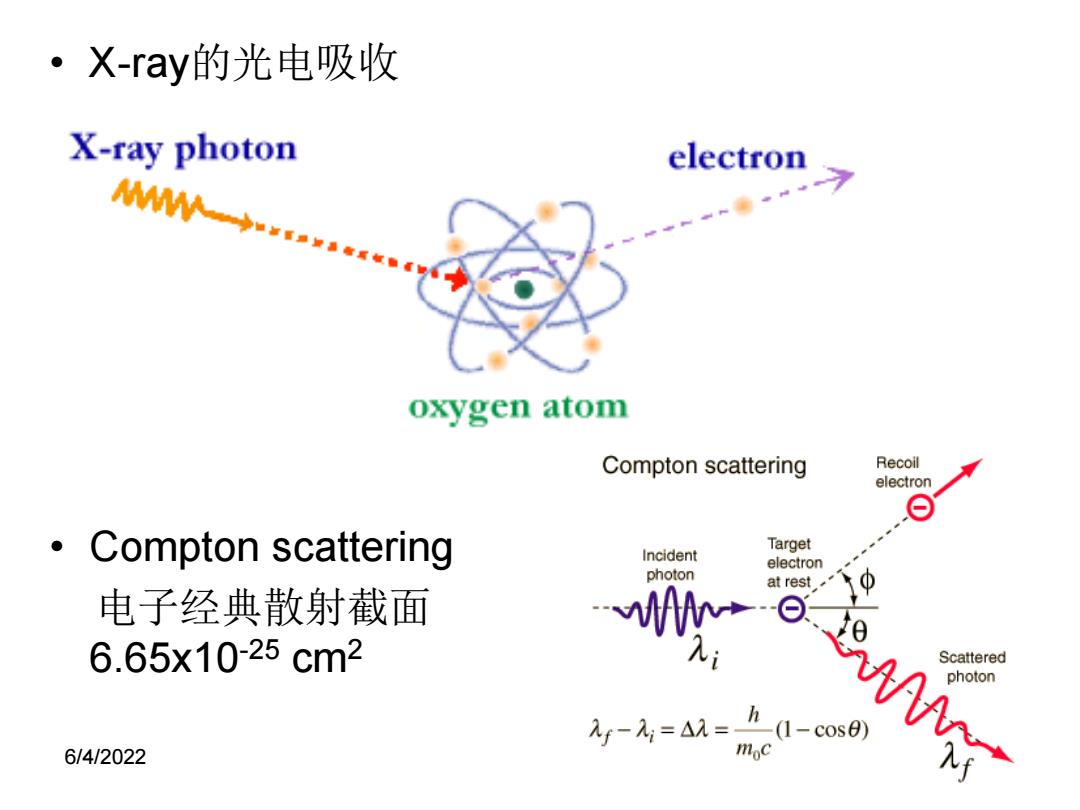
·X-ray的光电吸收 X-ray photon electron M→aa发.。 oxygen atom Compton scattering Recoil electron ·Compton scattering Target Incident electron photon at rest 电子经典散射截面 6.65x10-25cm2 Scattered photon y-2y=△M=h1-c0s6) 6/4/2022 mc
• X-ray的光电吸收 • Compton scattering 电子经典散射截面 6.65x10-25 cm2 6/4/2022
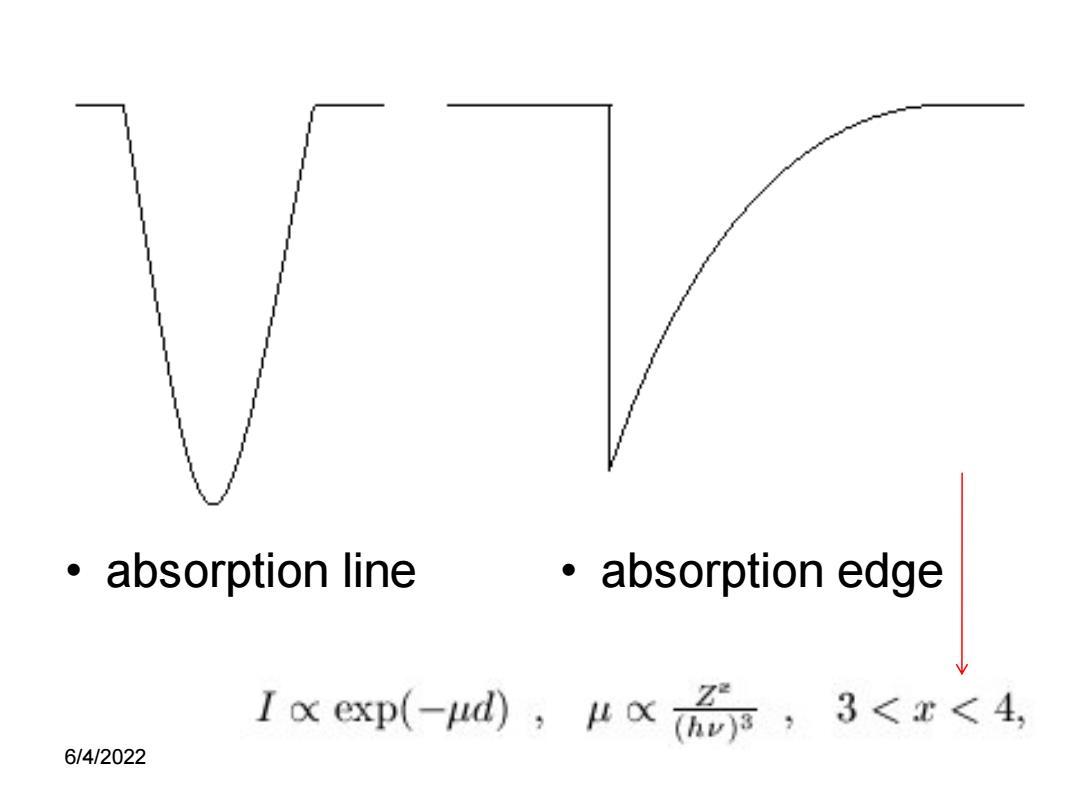
。absorption line ·absorption edge I exp(-ud),3<<4. 6/4/2022
• absorption line • absorption edge 6/4/2022

Photoelectric absorption An X-ray photon is absorbed in the process of removing an electron from an atom. The cross section for absorption (between edges): Gx oc E-3 Z4 with Z atomic number of the absorbing material For typical insterstellar matter (cosmic abundances): x=2x1022(E1kev)83N4 where: tx optical depth NH=hydrogen atoms column density (particles cm-2)
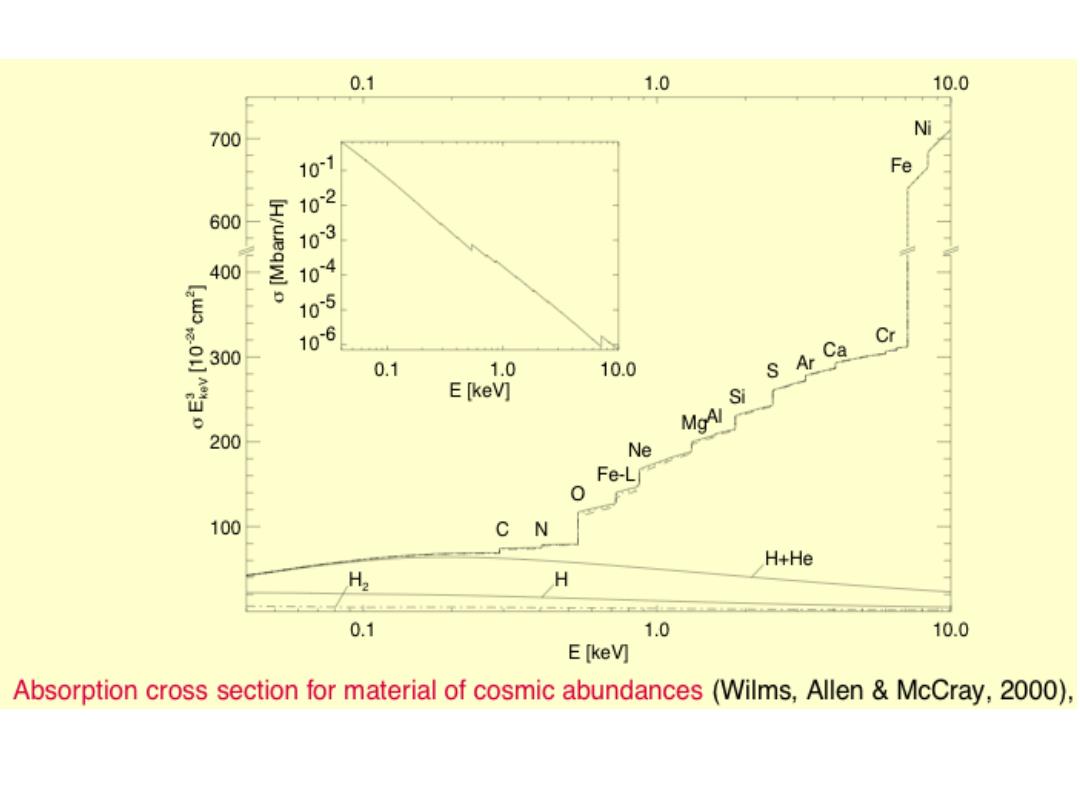
0.1 1.0 10.0 700 Ni 101 Fe 102 600 103 400 星 104 105 106 Cr 2300 0.1 1.0 10.0 S Ar Ca EkeVⅥ MgAI 200 Ne Fe-L 0 100 C N H+He H2 H 0.1 1.0 10.0 E[kev] Absorption cross section for material of cosmic abundances (Wilms,Allen McCray,2000)